A mesmerizing piece of Rainbow fluorite
Fluorite (also called fluorspar) is the mineral form of calcium fluoride. Pure fluorite is colourless and transparent, both in visible and ultraviolet light, but it shows as a colorful mineral due to impurities. Rainbow Fluorite displays a combination of colors inherent in Fluorite crystals, such as purple, blue, green, clear and yellow, in one colorful crystal. It appears striped, and ranges from transparent to opaque. Forget rubies, garnets and sapphires. Fluorite may be the world’s most colourful mineral, because of the enormous range of brilliant and even iridescent Colors it displays.
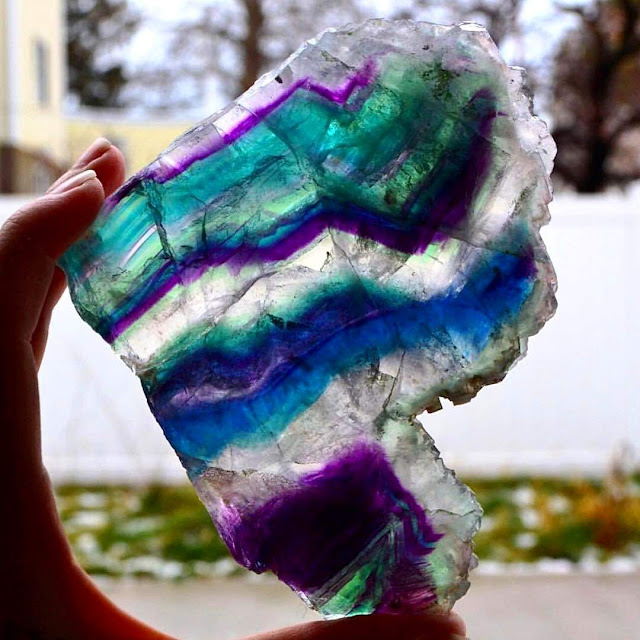
The funny thing is, pure fluorite crystals are transparent.
Fluorite is the mineral form of calcium fluoride,CaF2. It belongs to the halide minerals. It crystallizes in isometric cubic habit, although octahedral and more complex isometric forms are not uncommon.
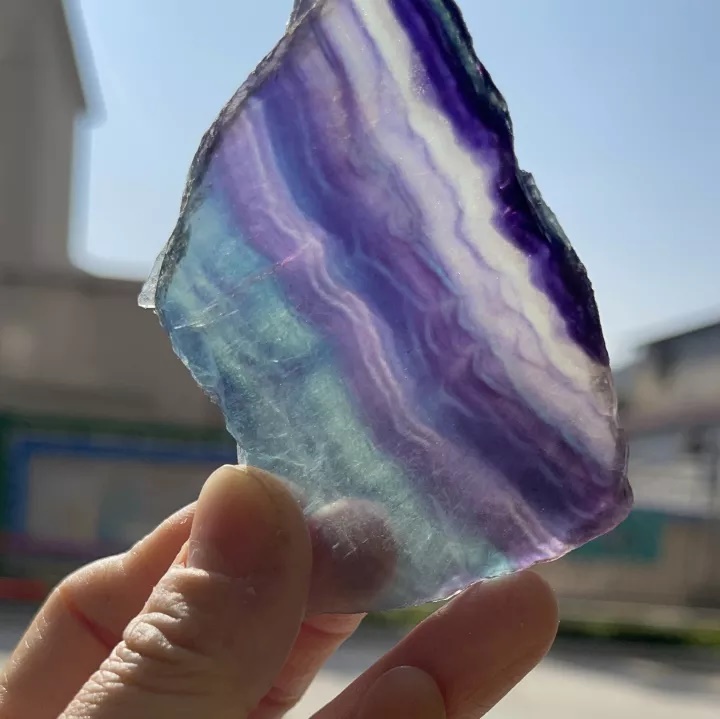
Fluorite is Allochromatic, meaning that it can be tinted with elemental impurities. It is one of the most varied colored minerals in the mineral kingdom, and the colors may be very intense and almost electric.
A crystal’s colour is dictated by the way light interacts with the chemicals in it, and by how these are bonded in an orderly structure, or lattice. Any impurities that work their way into fluorite’s lattice can alter its apparent colour. For example, manganese ions turn it orange.
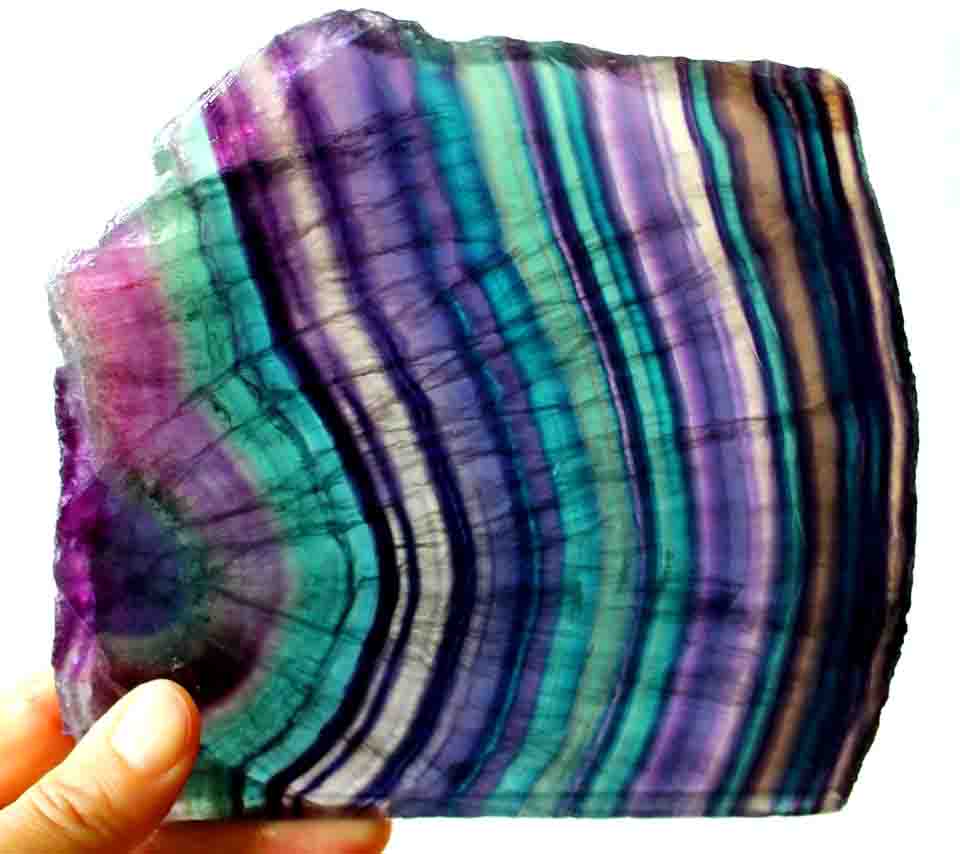
Structural defects within the lattice, known as colour centres, have a similar effect.
Fluorite comes in a wide range of colors and has consequently been dubbed “The most colorful mineral in the world”. Every color of the rainbow in various shades are represented by fluorite samples, along with white, black, and clear crystals. Pure Fluorite is colorless; the color variations are caused by various various impurities.
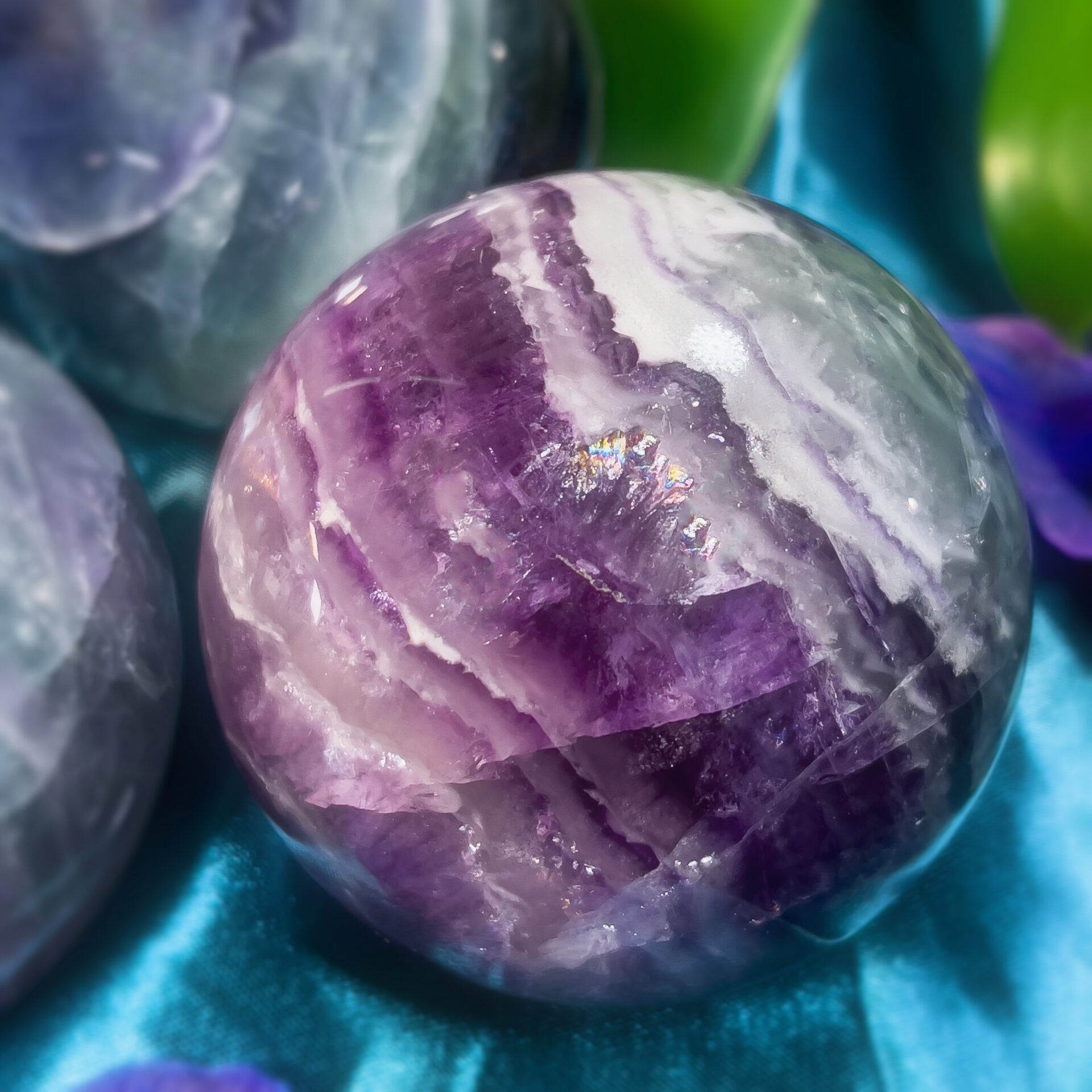
The most common colors are purple, blue, green, yellow, or colorless. Less common are pink, red, white, brown, and black. Color zoning or banding is commonly present. The color of the fluorite is determined by factors including impurities, exposure to radiation, and the absence or voids of the color centers.

Fluorite’s hallmark deep purple hue is the result of a small number of fluoride ions being permanently forced out of their lattice positions by irradiation or heating. When they move, an electron is left behind in each hole. When light hits the crystal, it is absorbed and re-emitted by these electrons, producing the colour we see.
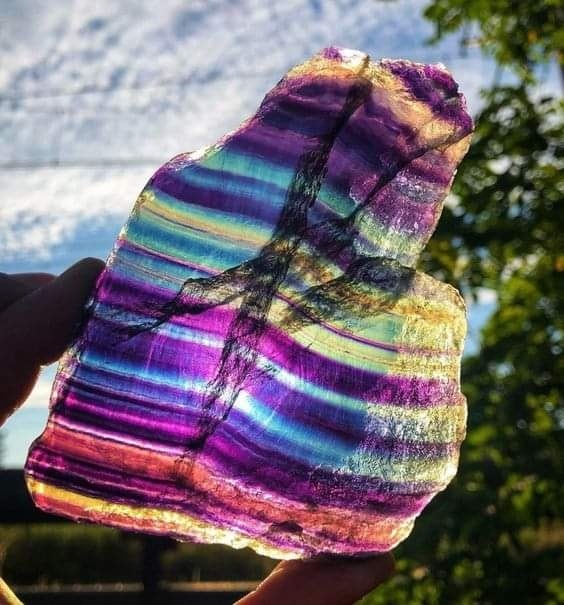
.





